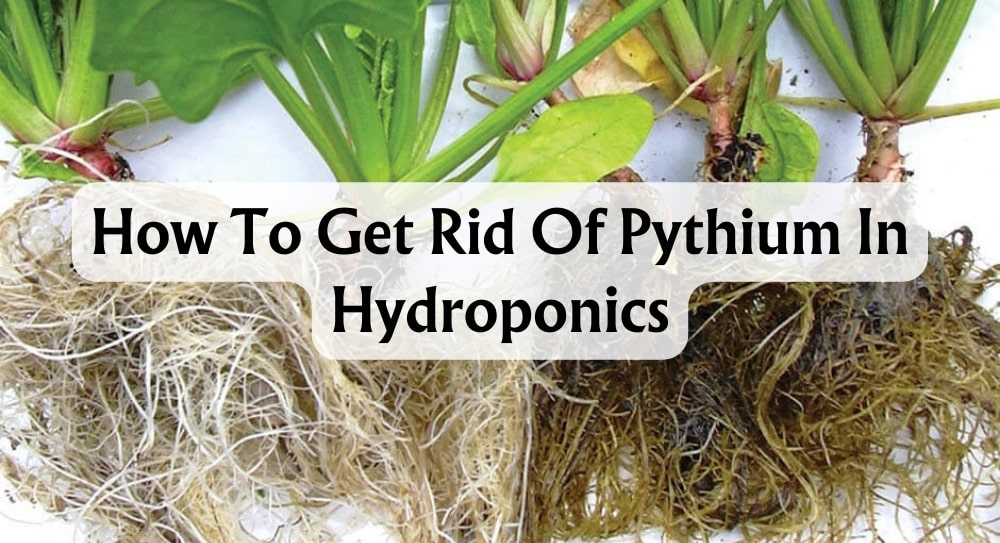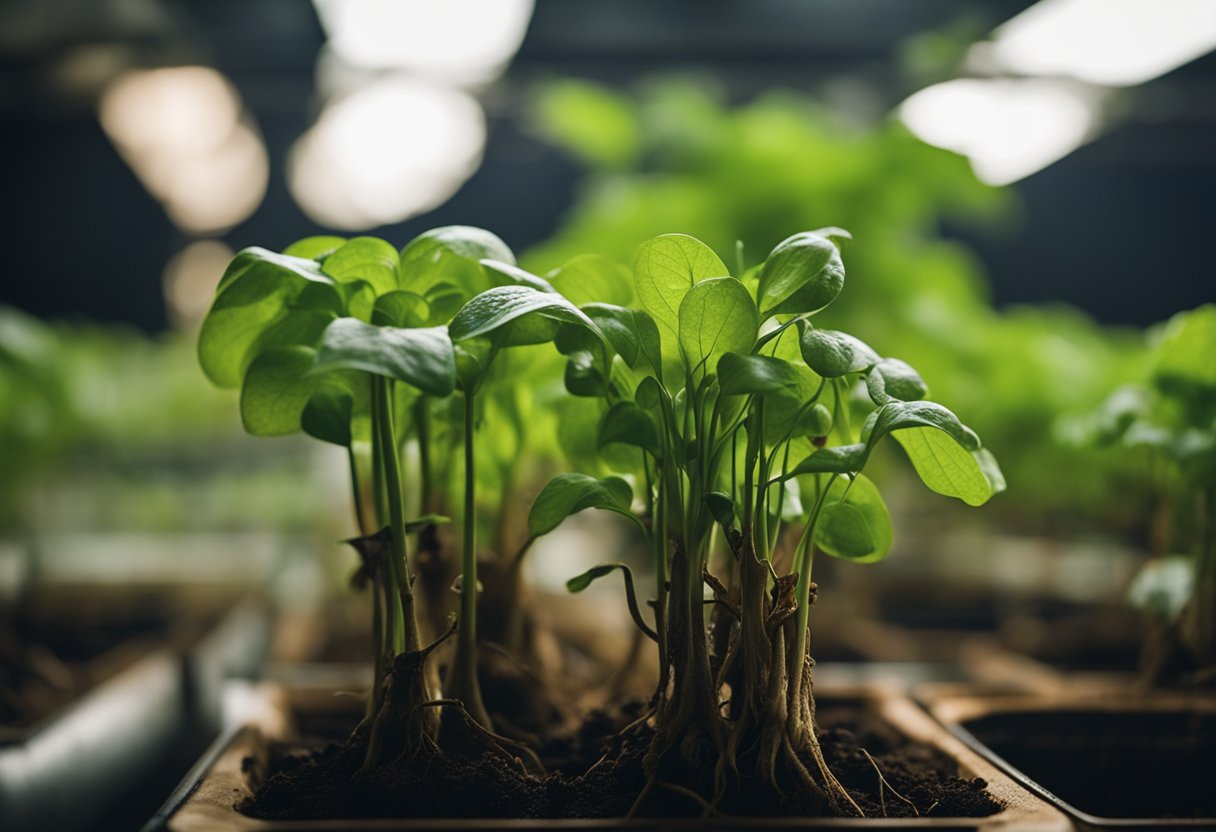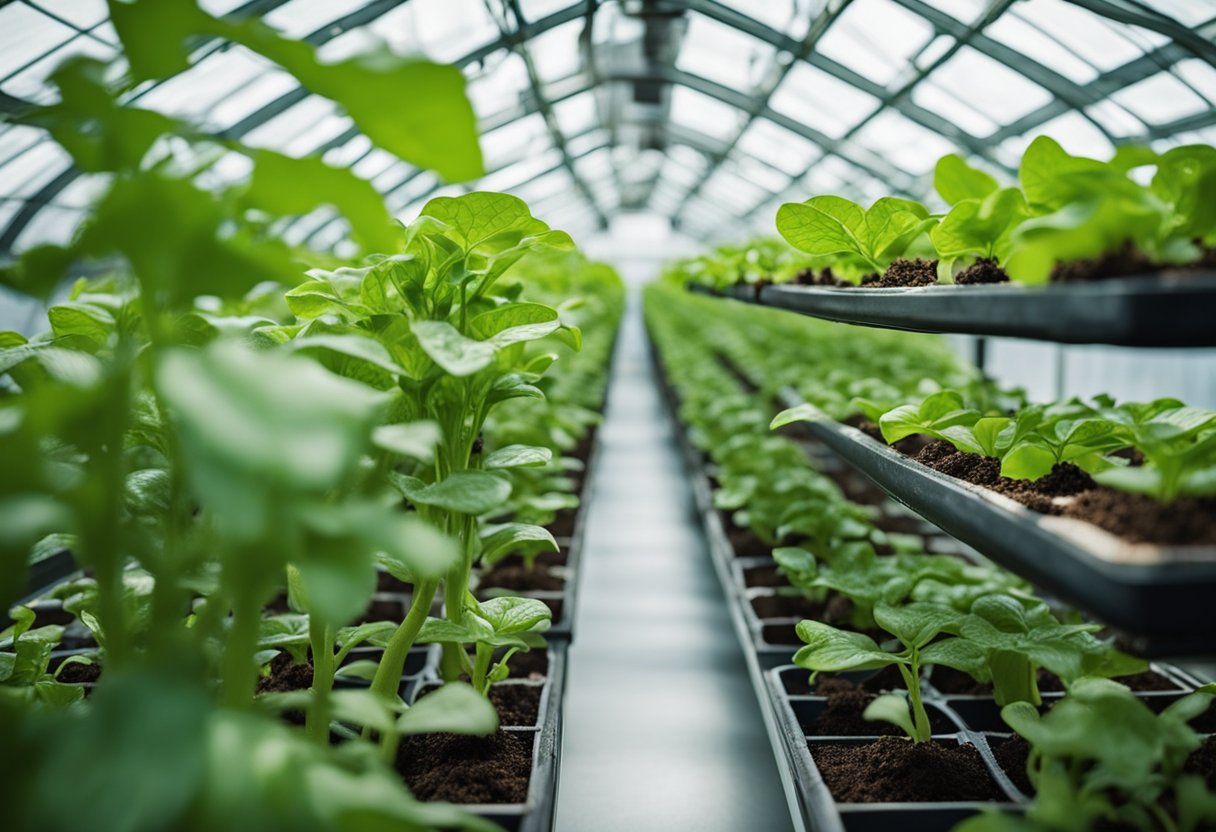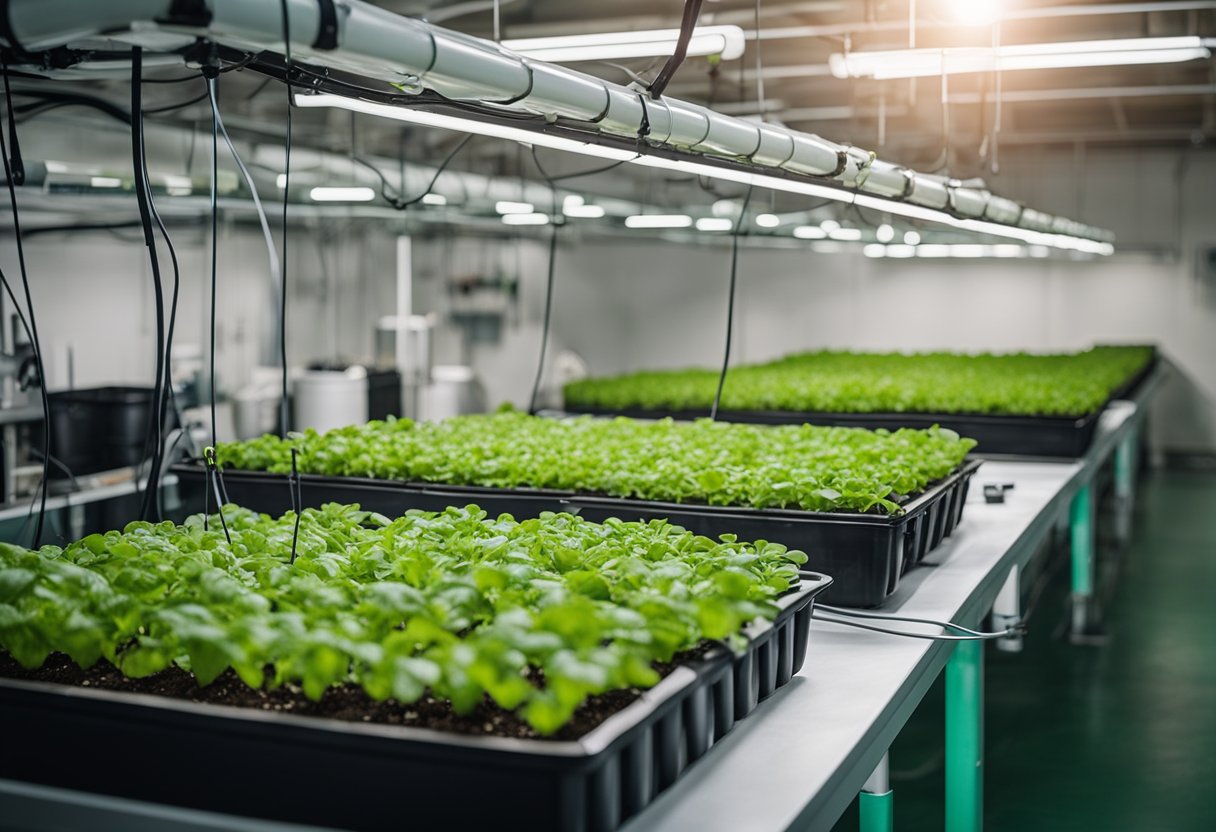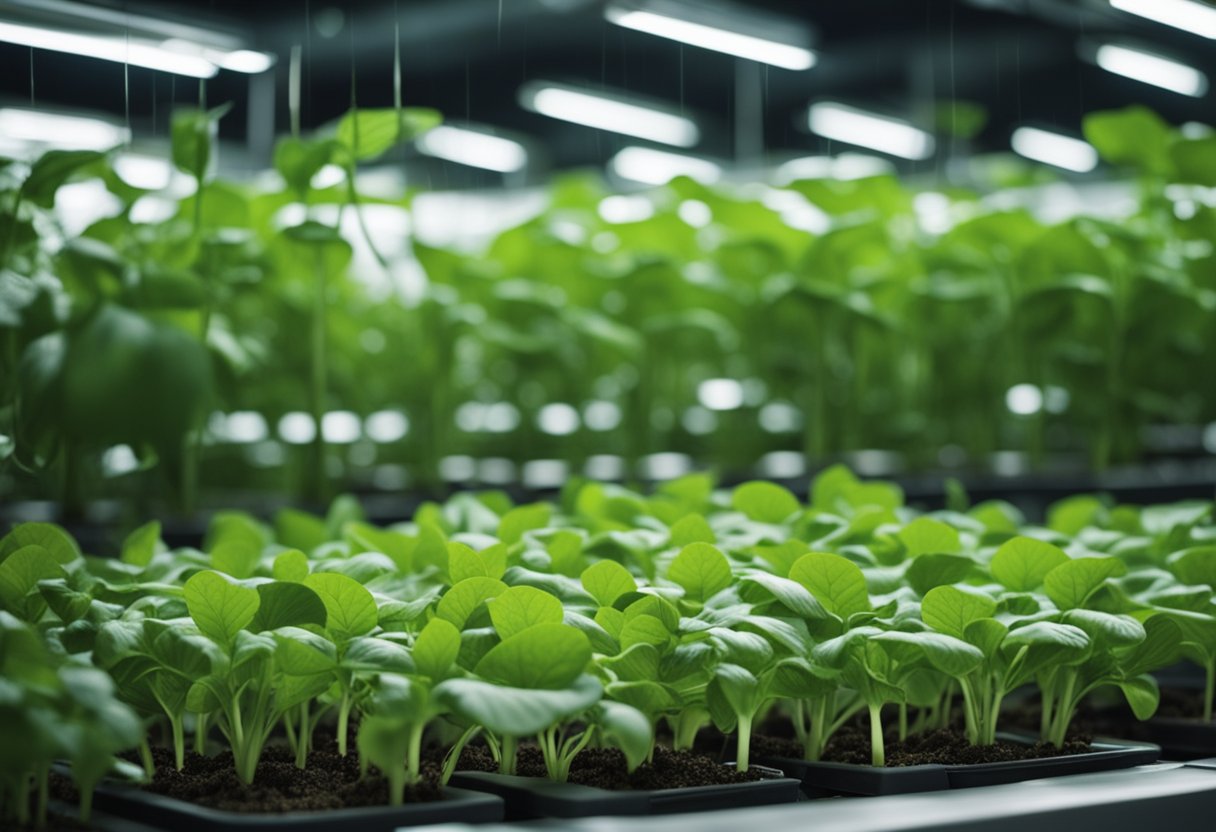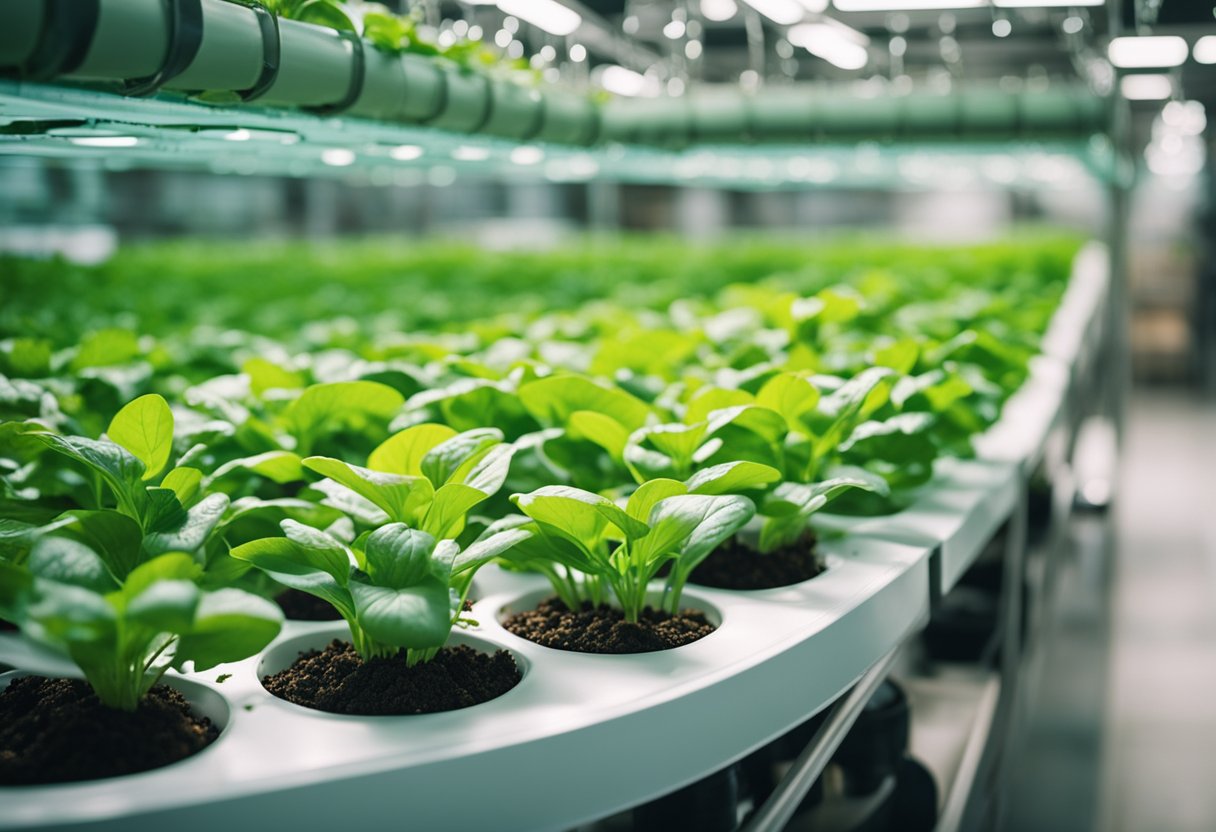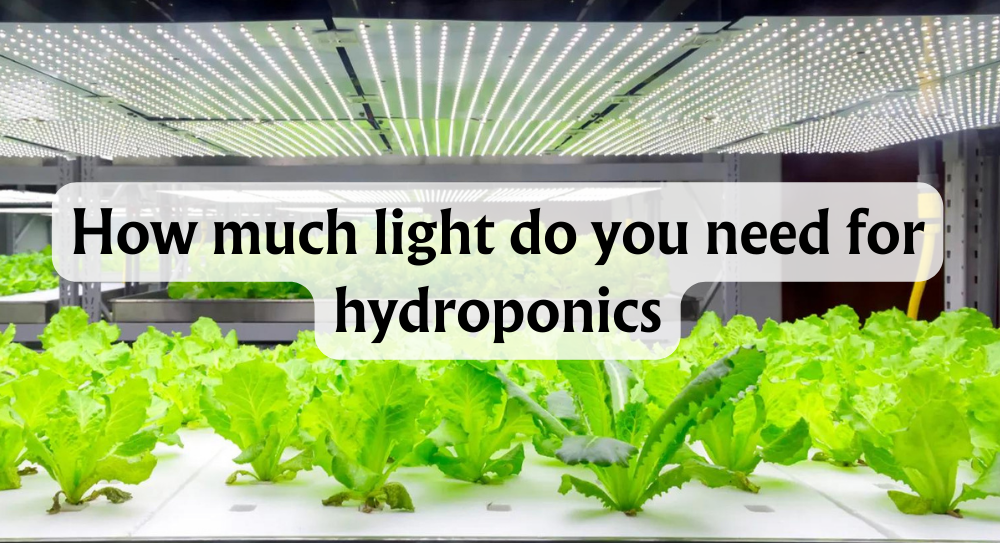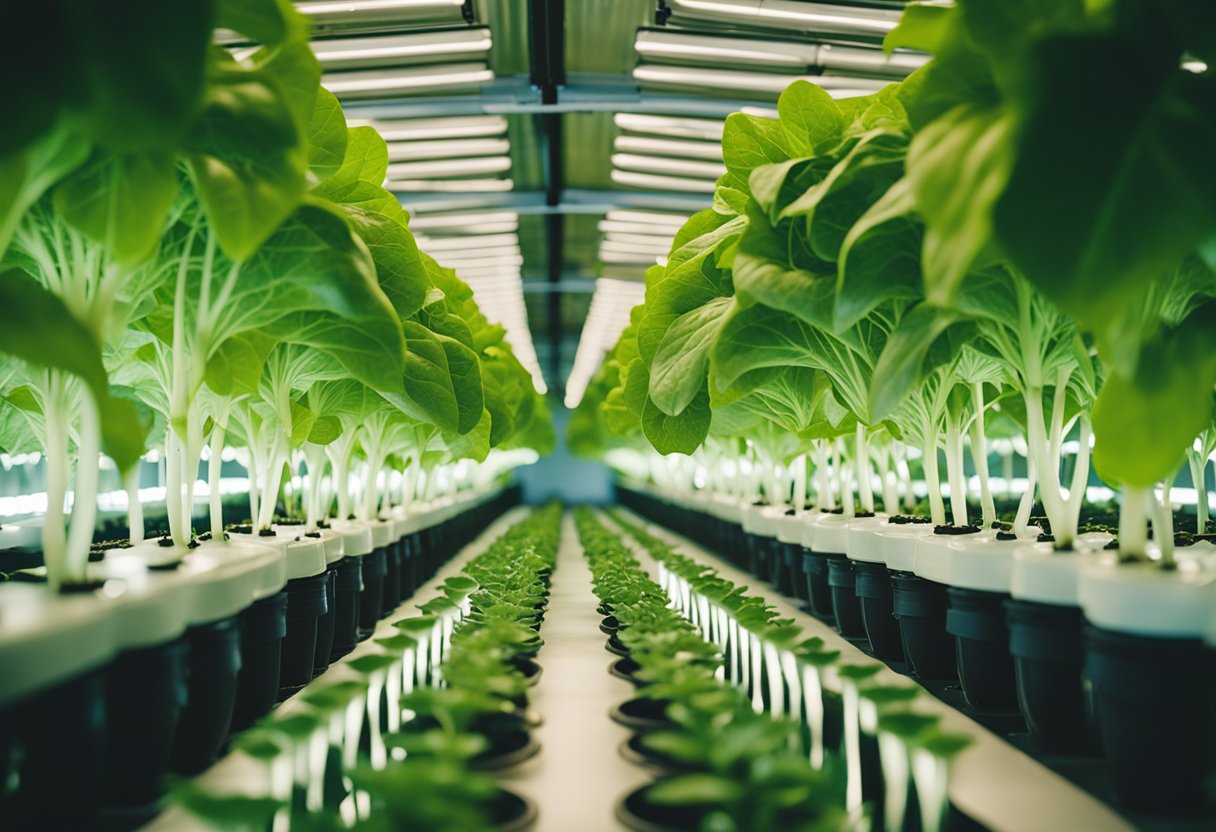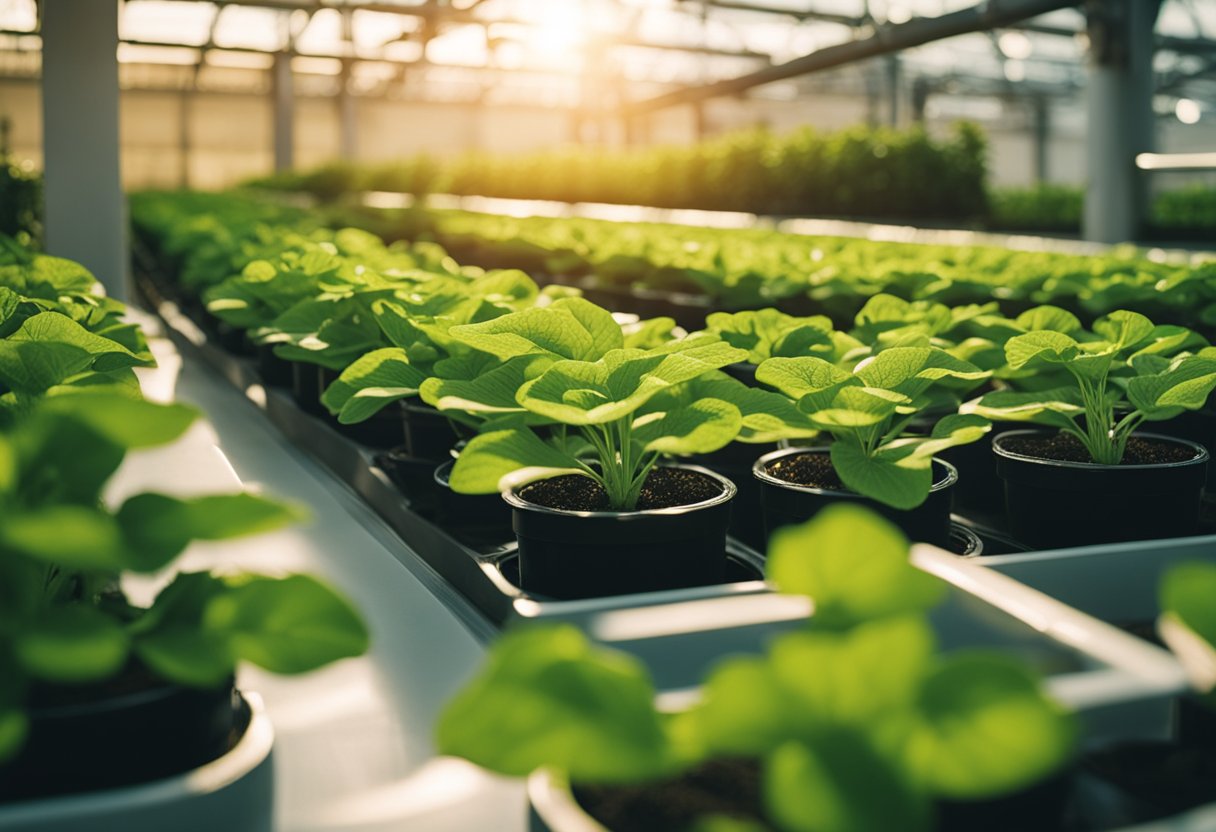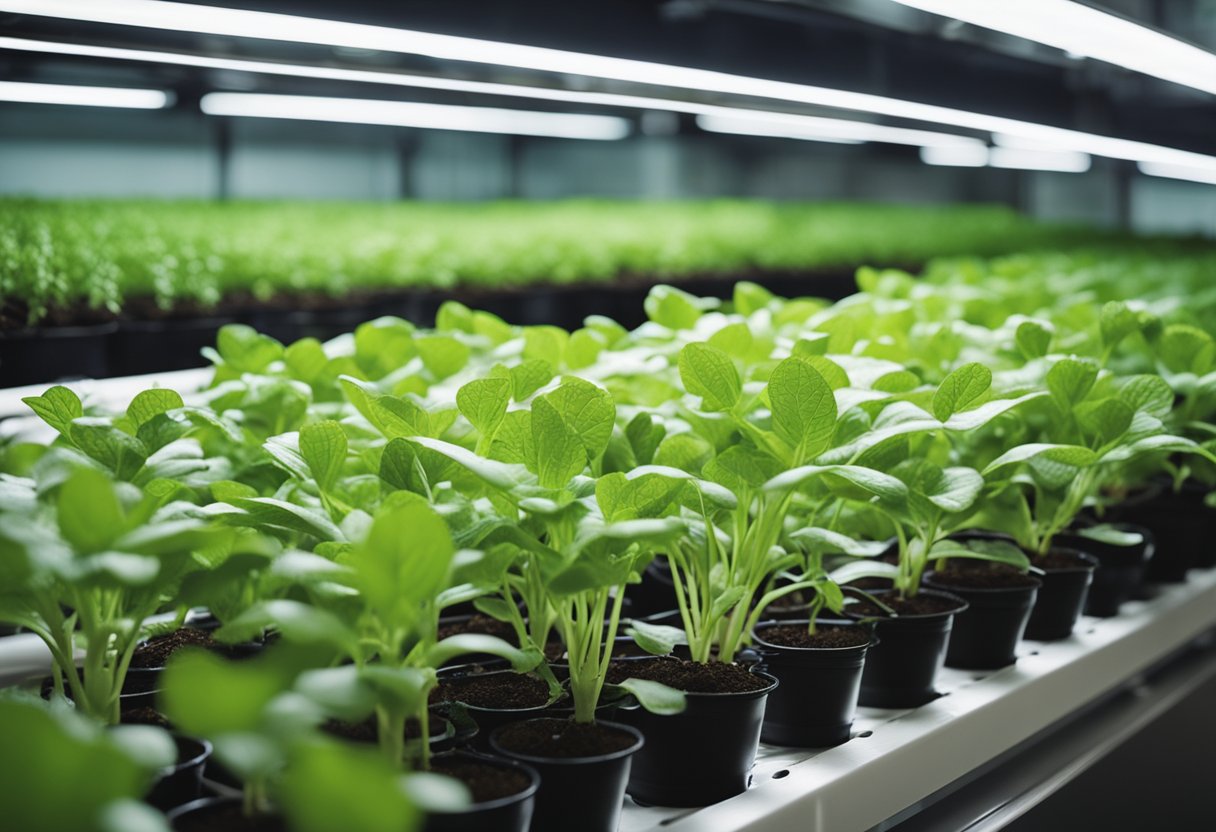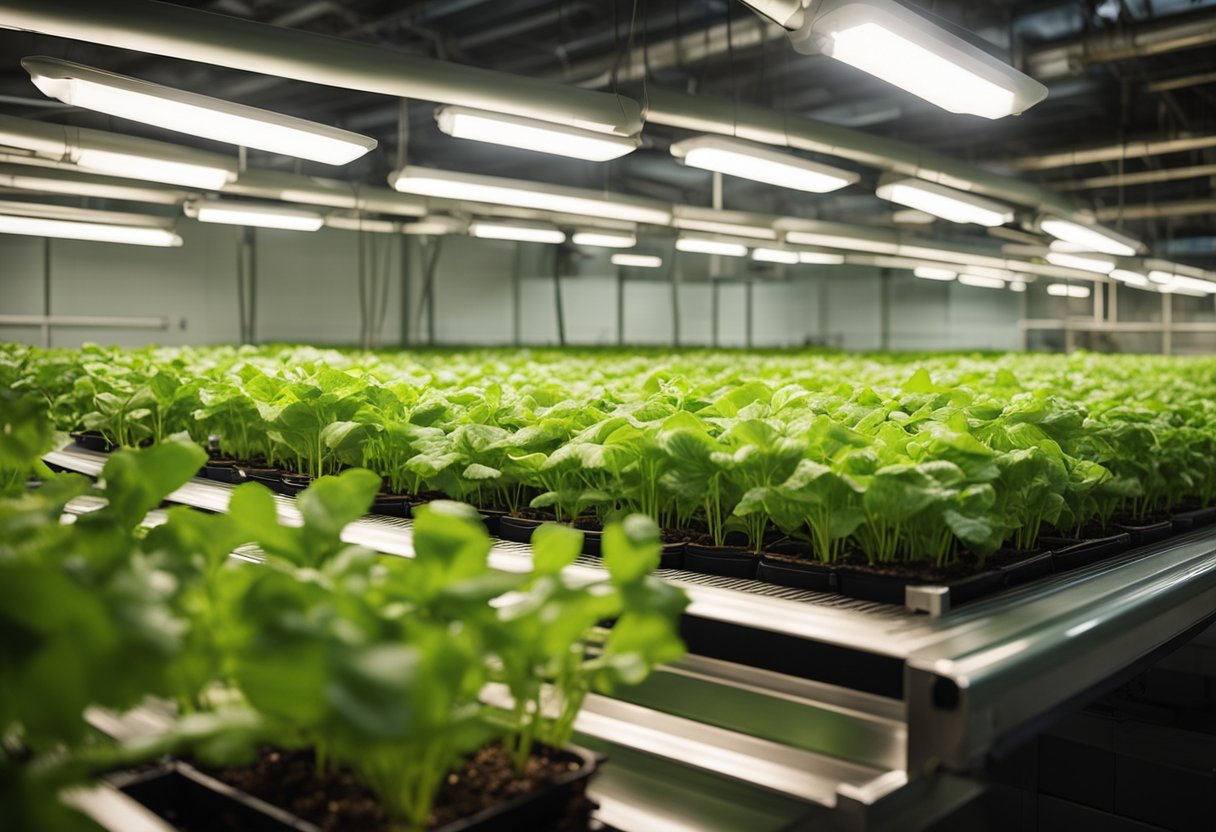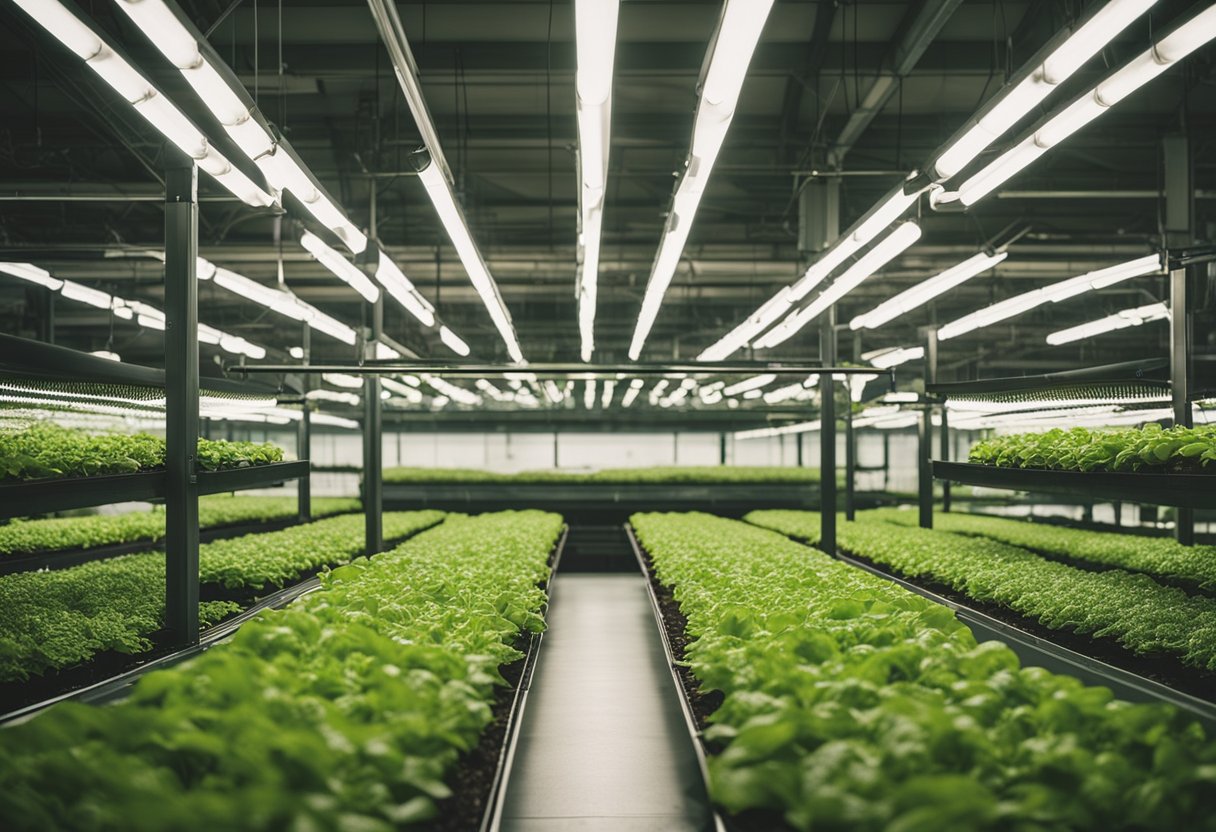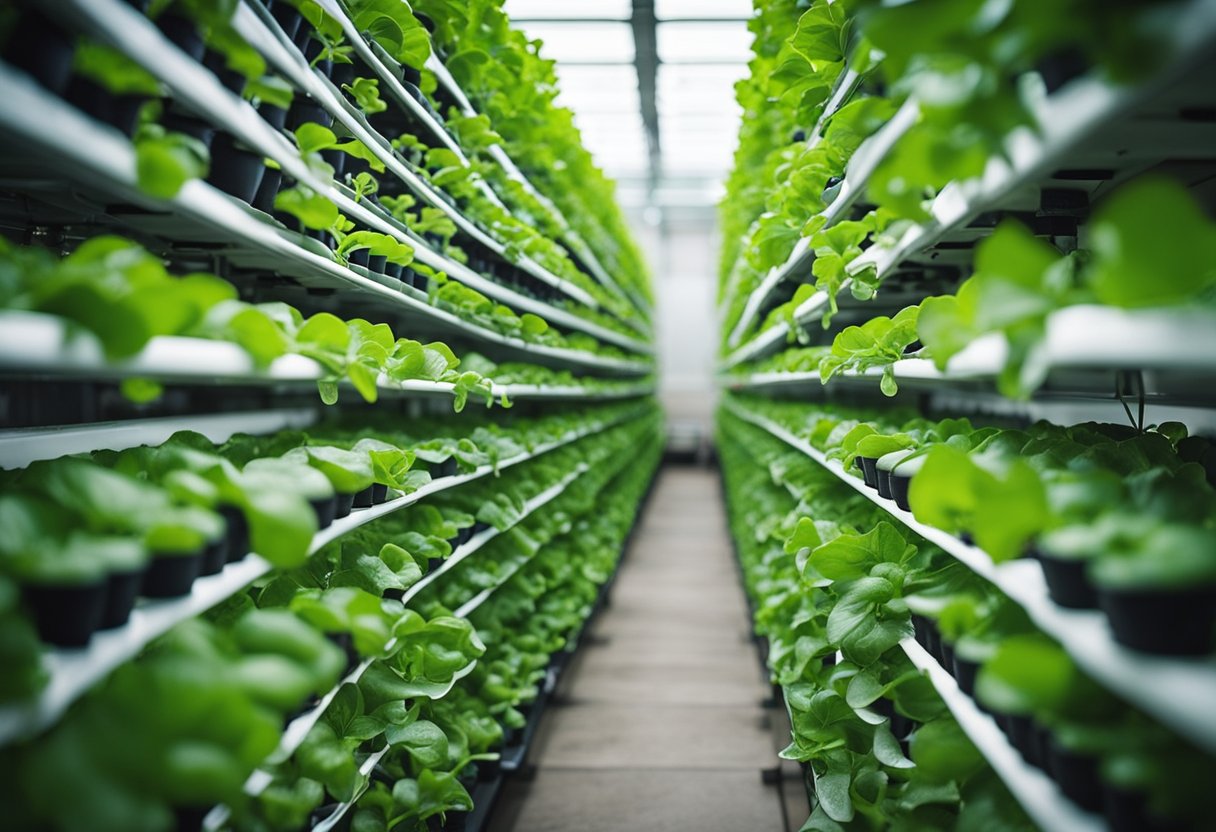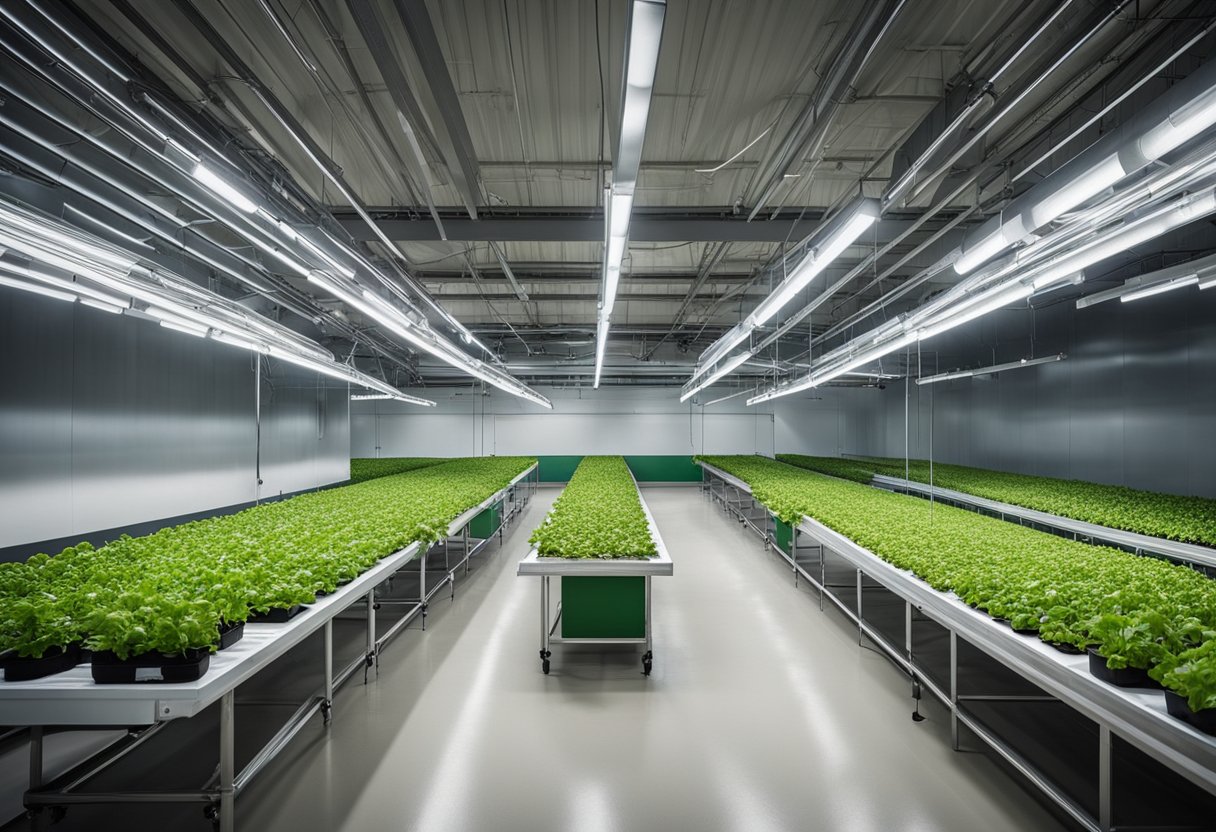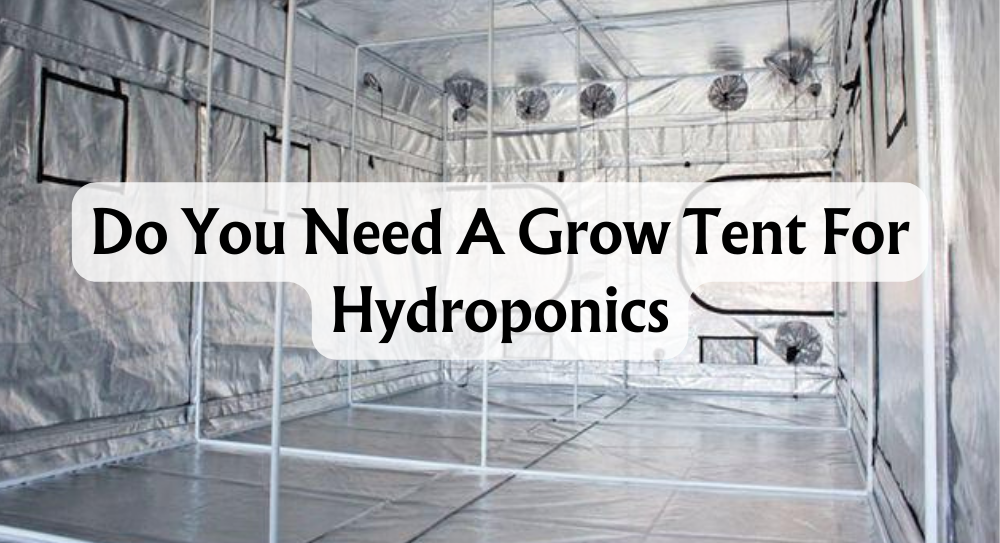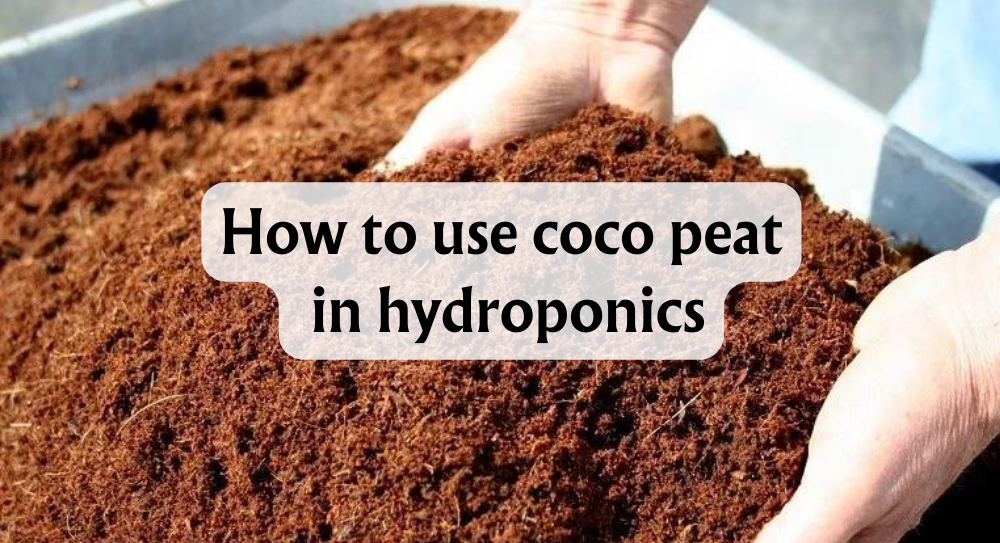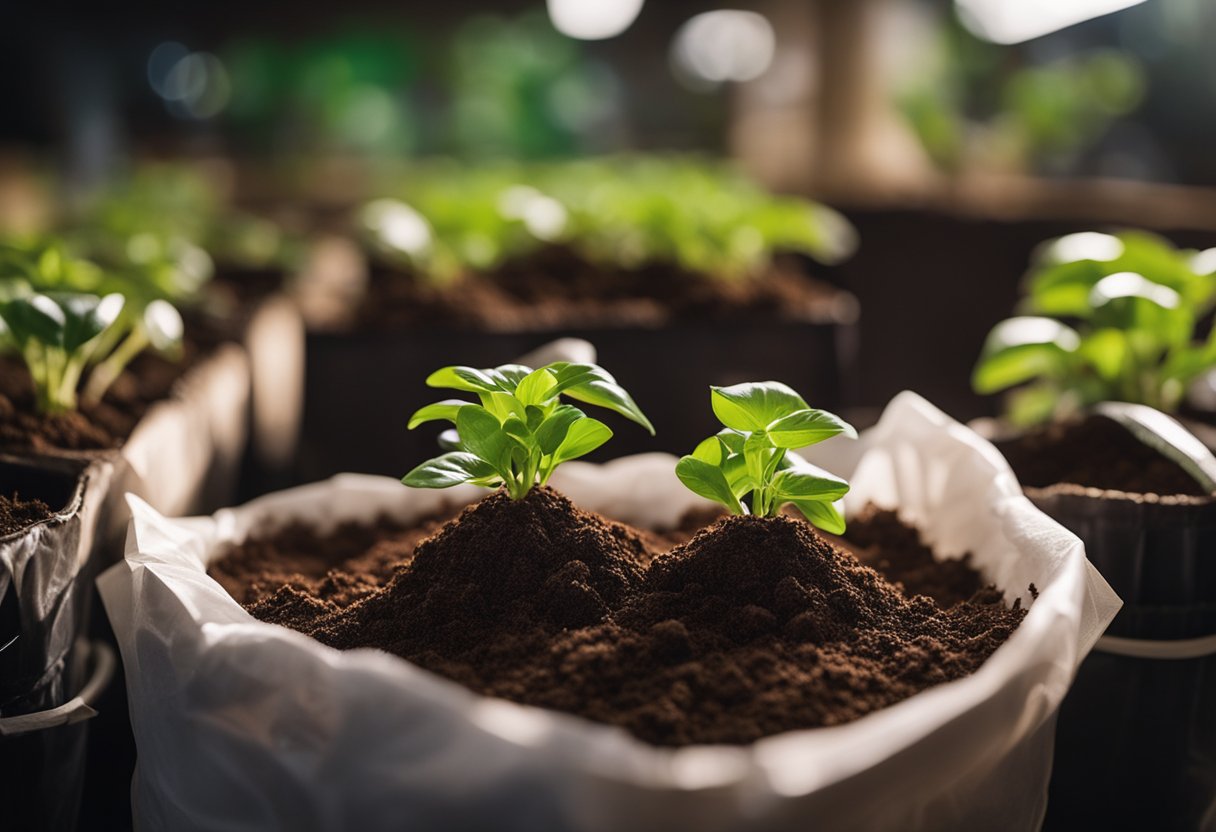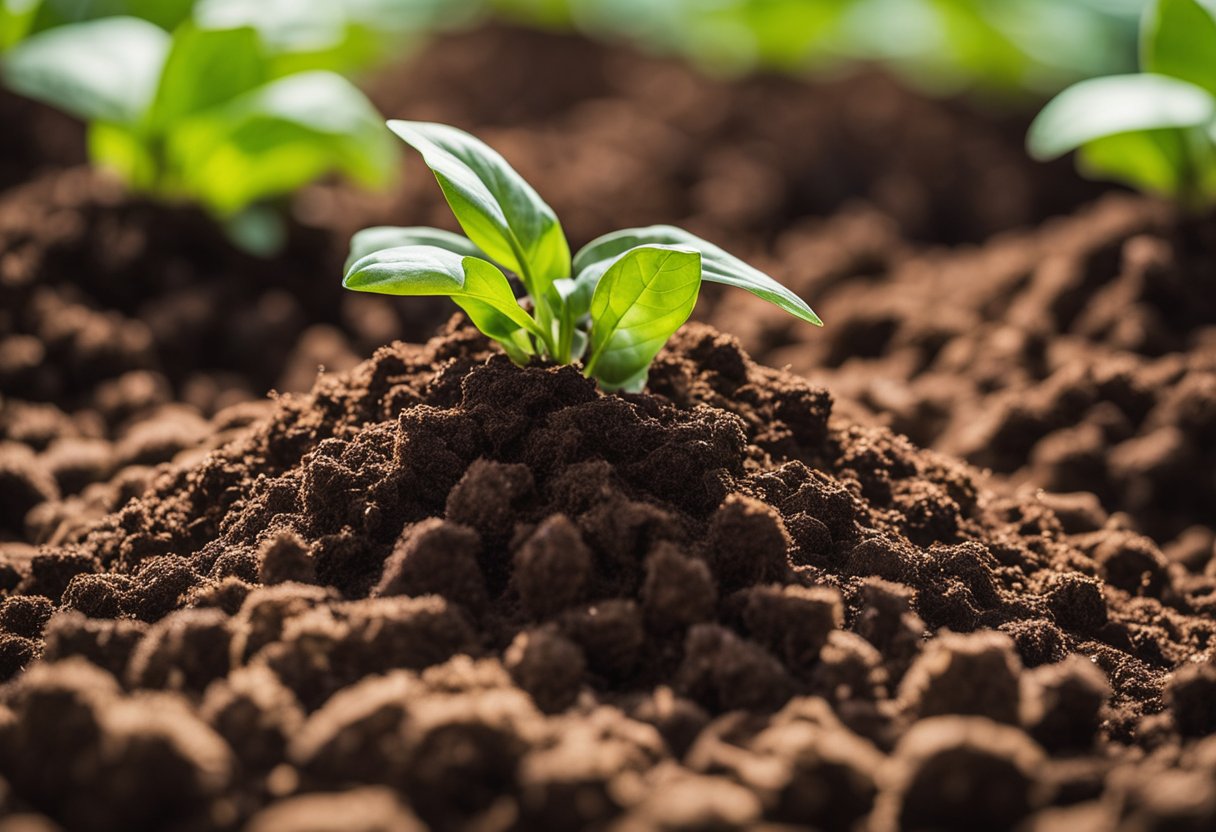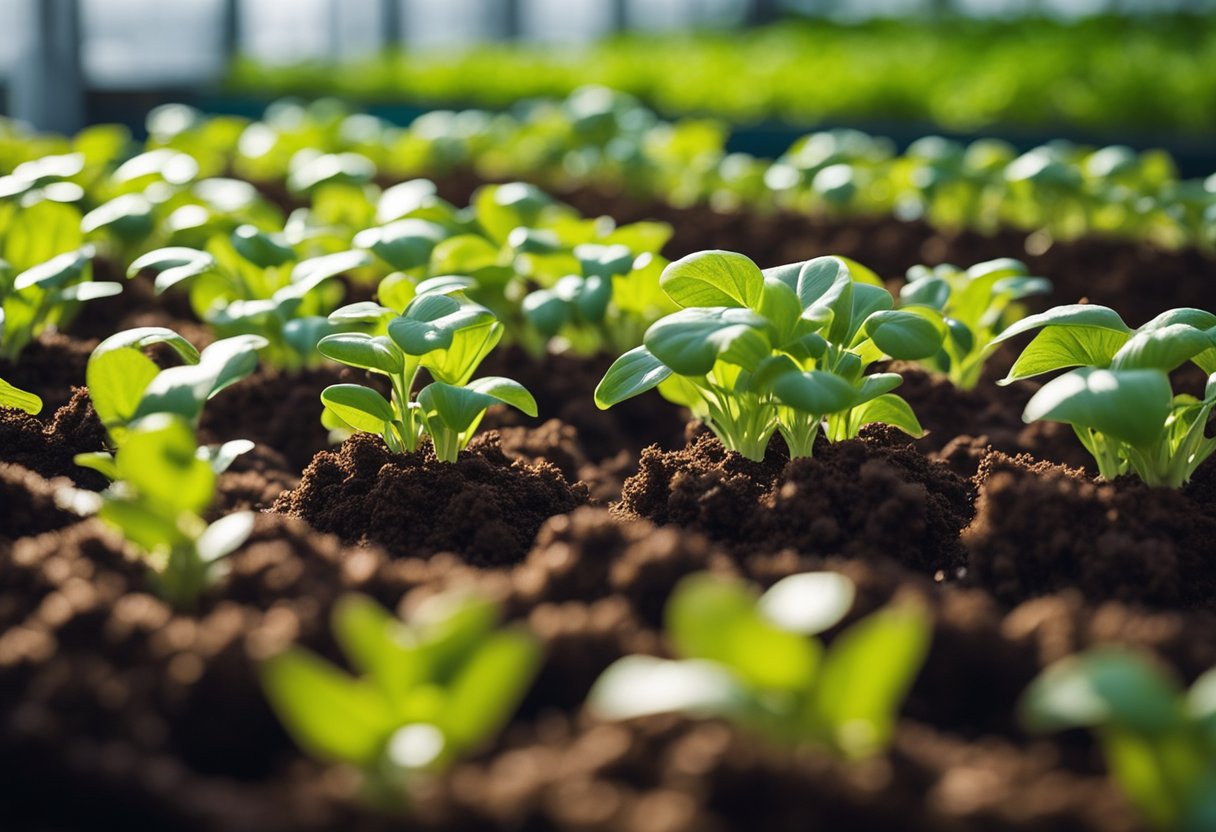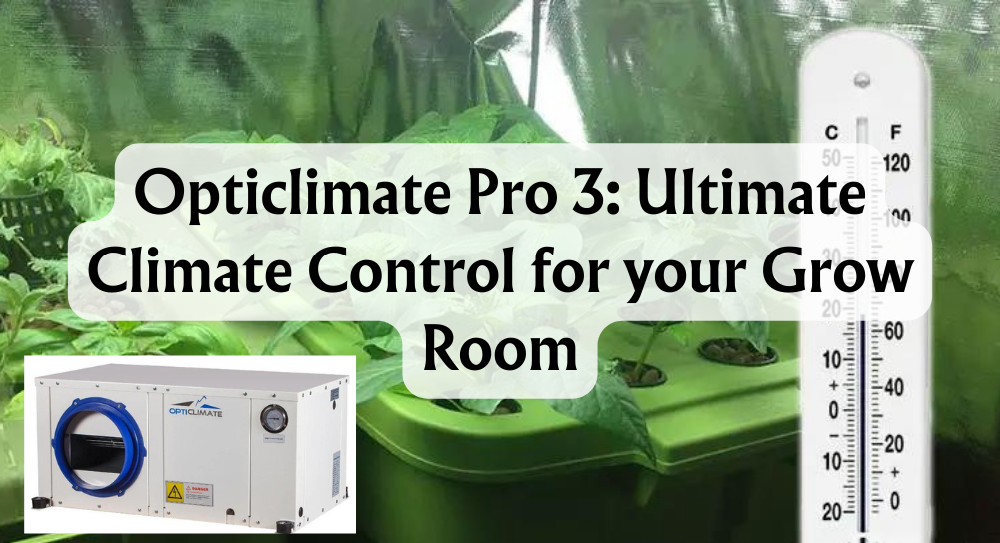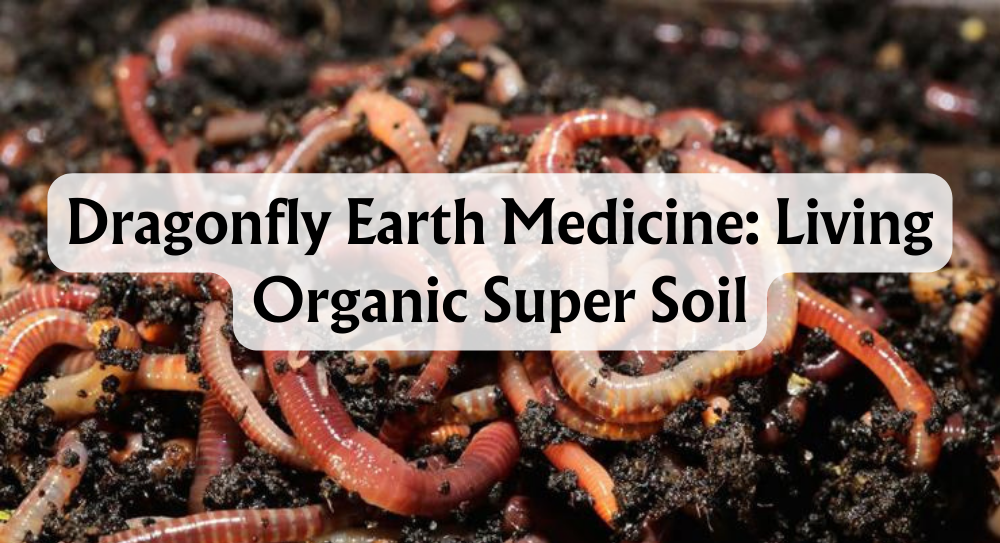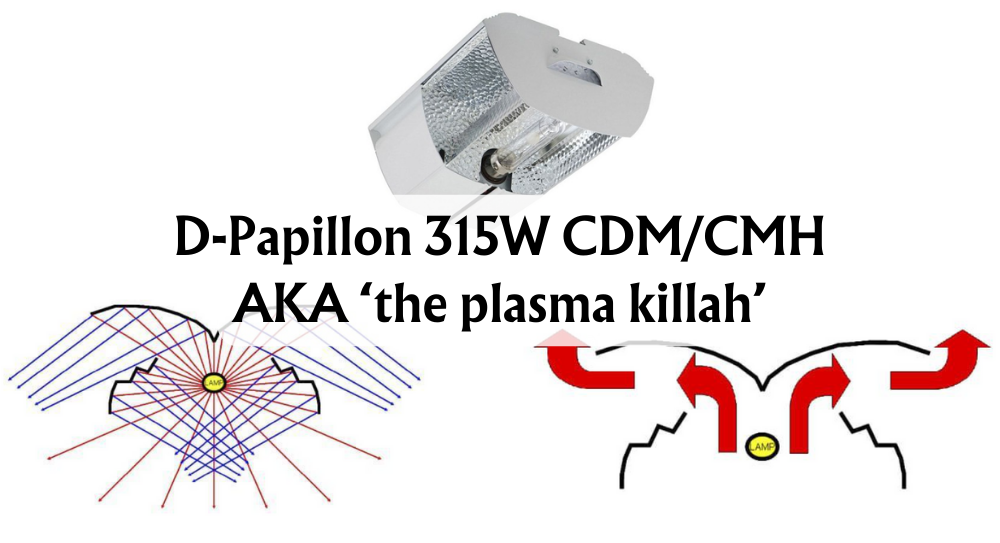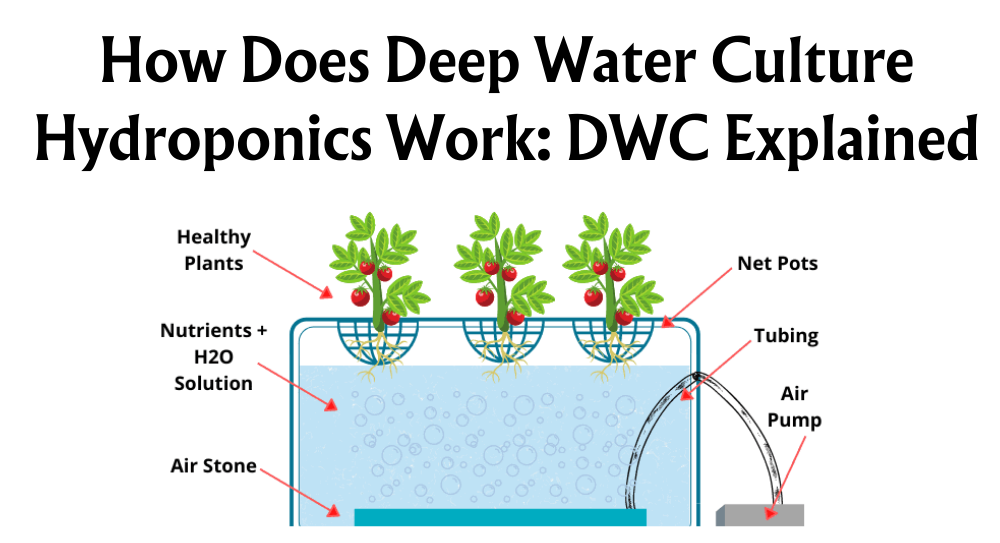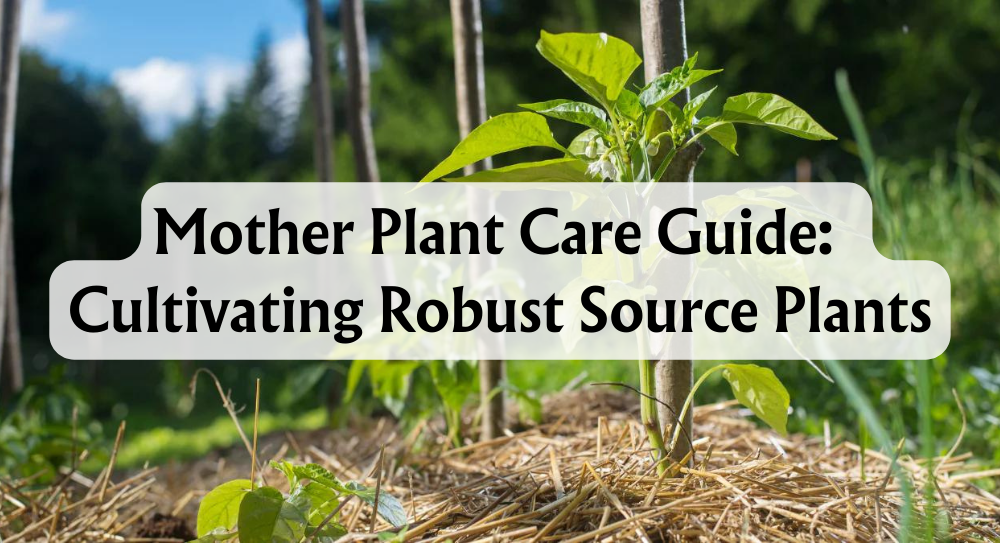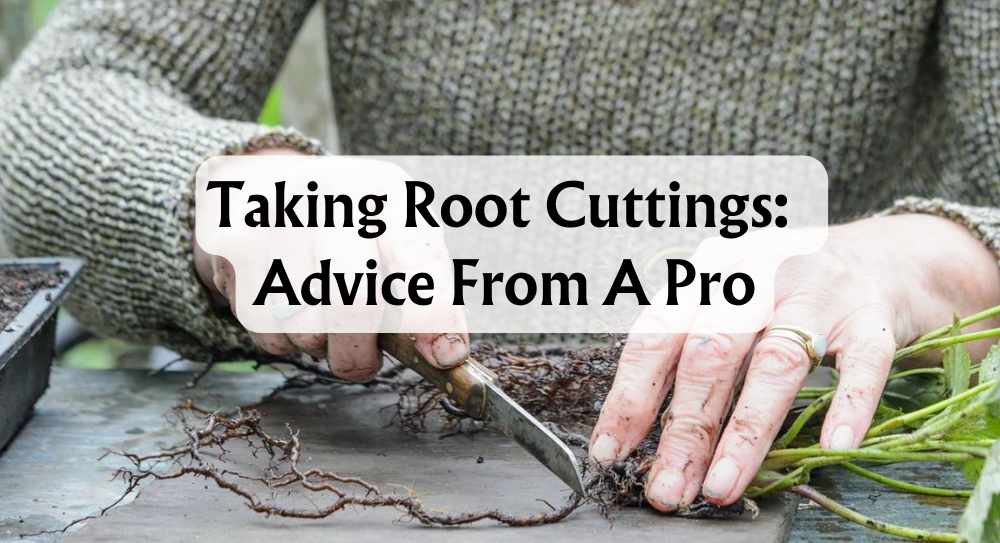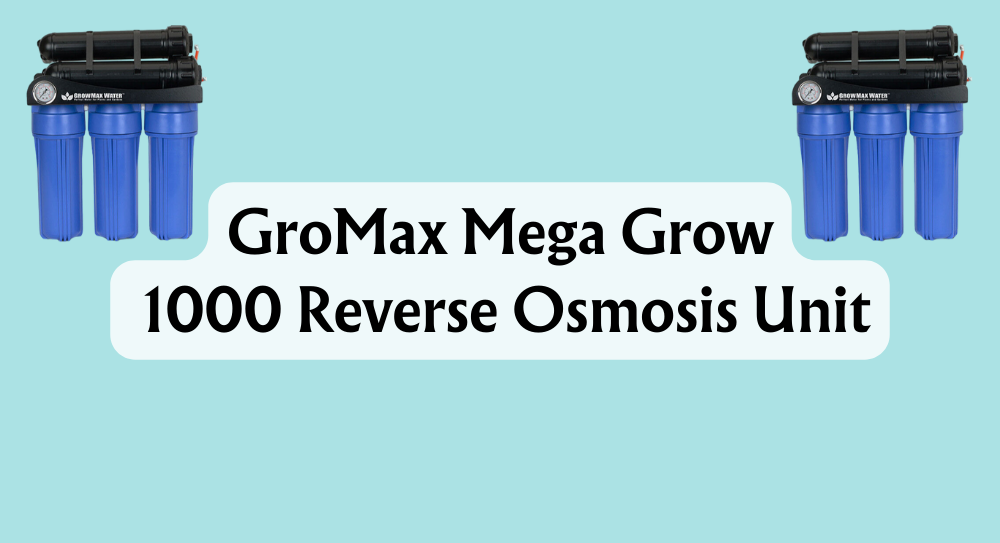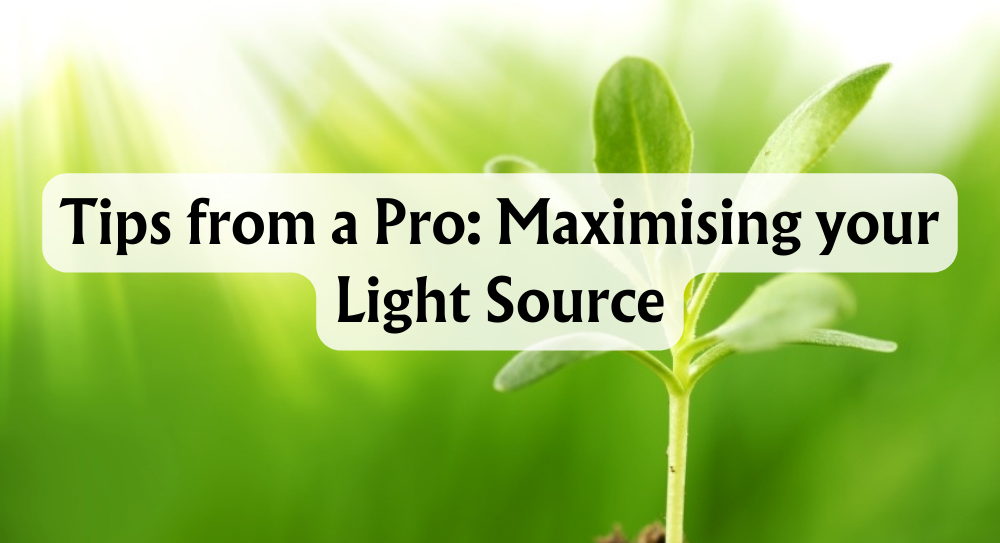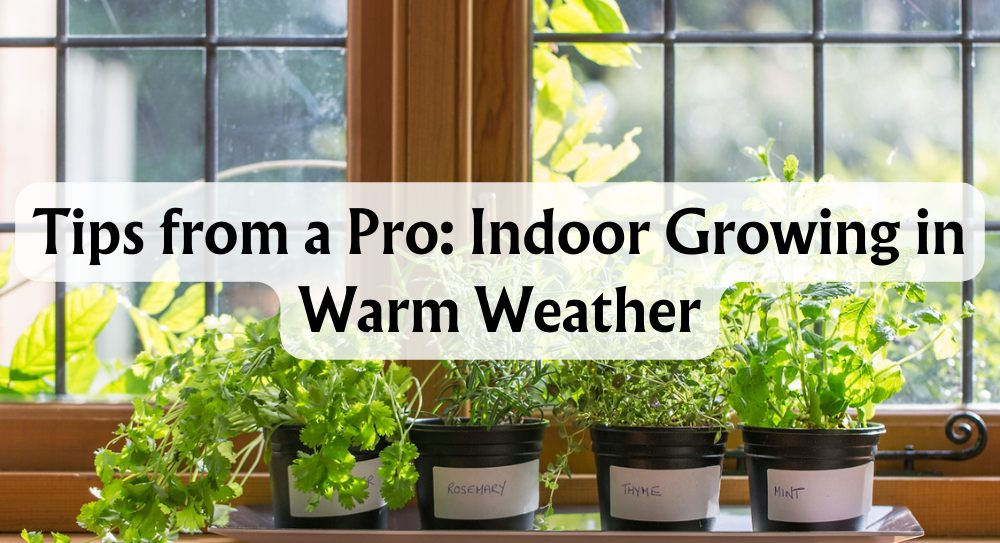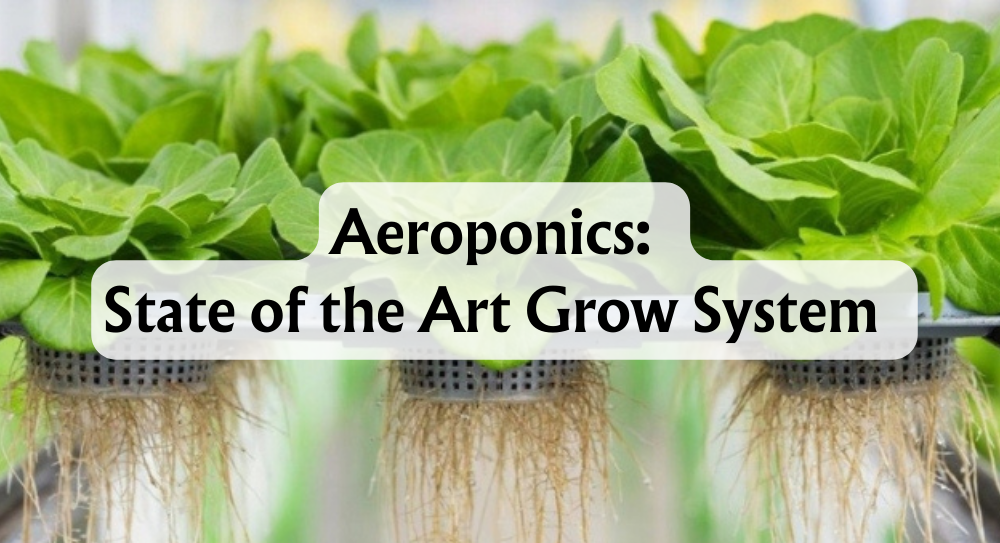What is a Wick System in Hydroponics?
Hydroponics, the fascinating technique of using just water and nutrients rather than soil, has revolutionised the way we think of gardening. This soil-less cultivation method uses less water, requires fewer pesticides, and can result in higher plant yields. But for those just getting started, the various types of hydroponic systems might seem intimidating. That's where the wick system comes into play.
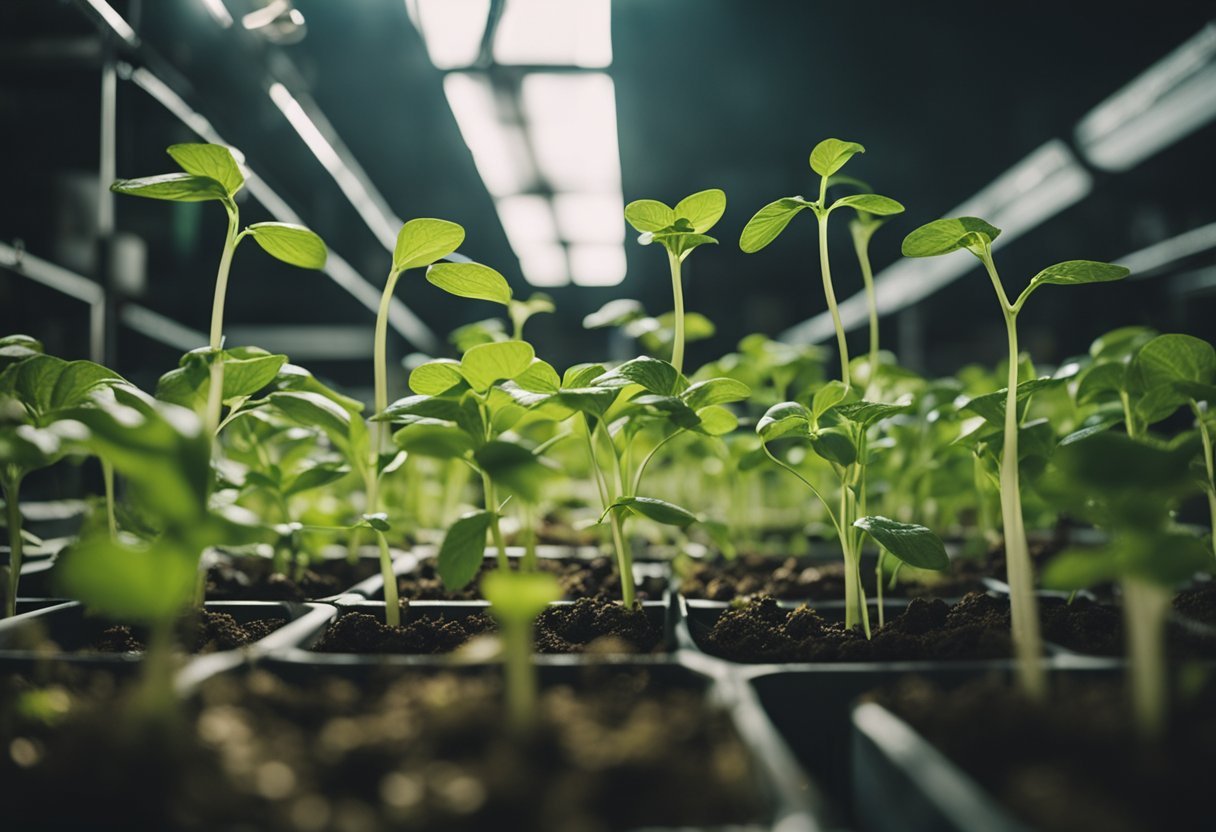
The wick system is the most uncomplicated form of hydroponics, making it perfect for beginners. It’s a passive system, which means it doesn't rely on any moving parts like pumps or electrical components. We simply rely on a wick, hence the name, to draw nutrients and water up to the plant's roots. The beauty of this system is its simplicity and the relative ease with which it can be set up and maintained, even on a tight budget.
In this article, we'll explore the wick system's functioning, the necessary materials for setting up your own, and the maintenance involved to ensure healthy plant growth. We’re getting to grips with the different types of growing mediums that work best in a wick system, managing the nutrient solution to maximise plant health and yield, and how to tailor the system to suit a variety of plants.
Key Takeaways
- Hydroponics allows for soil-free plant cultivation with potentially higher yields.
- Wick systems are ideal for hydroponic beginners due to their simplicity and low cost.
- Proper setup and maintenance of a wick system can promote healthy plant growth.
Understanding Wick Systems in Hydroponics
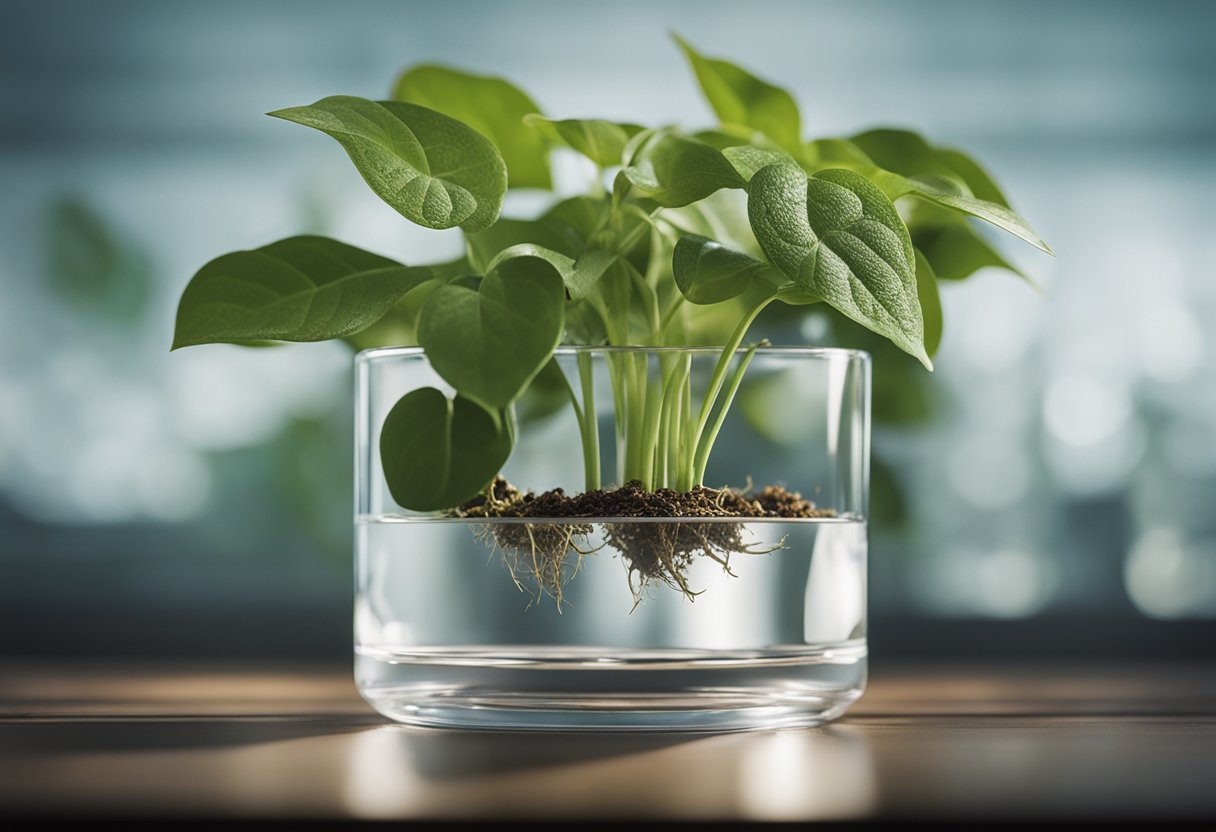
Delving into hydroponics can be incredibly rewarding, especially when starting off with a method as straightforward as a wick system. Wick systems marry simplicity with efficiency, making them an excellent entry point and system for beginners.
What Is a Wick System in Hydroponics?
A wick system in hydroponics is pretty much the beginner's best friend. It's one of the oldest and simplest methods of hydroponic gardening, where plants are nourished directly without the fuss of complex mechanisms or electricity. At its core, wick systems utilise a passive system that banks on capillary action, much like a candle wick drawing wax, to transport the nutrient solution from the reservoir to the plant roots.
Now, what sort of greens can we coax from these systems, you ask? The beauty lies in their versatility! Herbs, lettuce, spinach, strawberries, and even vibrant peppers can thrive in the gentle embrace of a wick system's tender care.
Components of a Hydroponic Wick System
The anatomy of a wick system is pretty straightforward, involving just a few basic parts:
- Reservoir: This is where the nutrient solution mingles, awaiting its journey upwards.
- Wicks: Typically wick material is made of absorbent felt or cotton, these are the silent workers that pull up the nutrient solution via capillary action.
- Growing Medium: Supports your plants and is in direct contact with the wicks to facilitate nutrient uptake. Choices are plenty; from coco coir to perlite or even vermiculite.
- Plants: The living, breathing heart of any hydroponic system. Rooted in the growing medium, they sip on that nutrient-rich moisture.
So, we've laid out the components, but what about the perks? Low cost, minimal upkeep, and you don't have to worry about bumping up your water bill dramatically—it's a winning situation all around. Plus, being a passive system, it's the epitome of 'set it and forget it', perfect for busy or forgetful gardeners like myself at times.
Remember, while it's tempting to kit out your entire greenhouse with these bad boys, wick systems suit small to medium-sized plants best. For bigger plant aspirations, exploring other hydroponic systems might just be the ticket.
Dynamics of a Wick System
In this section, we're diving into how a wick system operates. We'll walk through its components and the science behind it to give you a clear picture of this simple yet efficient method of hydroponic gardening.
How a Wick System Operates
Components of a Wick System: Our wick system is composed of a few fundamental parts: a reservoir to hold the nutrient solution, a container for the plant and growing medium, the wick itself, and the nutrient solution. It's akin to a self-watering plant pot but with a focus on hydroponic efficiency.
Assembling the Wick System: To get started, choose a container and a reservoir that match in size and shape. You'd typically want a container that fits comfortably atop the reservoir. Drill a couple of holes in the bottom of the container, just right for the wick to slip through snugly. We'll then guide our wick down through these holes and let it soak in the reservoir. We fill our container with a well-aerated growing medium and then nudge in the seedlings.
Working Mechanics: The magic happens all thanks to capillary action. This nifty bit of science allows the nutrient solution to travel up the wick and supply our plants with much-needed nourishment. Think of when you watch a paper towel soaking up a spill — that's capillary action at work. Our growing medium, meanwhile, keeps hold of this moisture and offers a perfect place for roots to thrive, while any surplus solution finds its way back to the reservoir.
Tips and Tricks: To get your wick system working like a dream, consider the wicking material. A cotton wick? Classic choice. Nylon or propylene? They’re top-notch for a steady flow. It’s all about finding that perfect balance between nutrient delivery and aeration.
Keep an eye on pesky algae and salt build-up, as they can throw a spanner in the works. Regular checks of the nutrient solution’s pH and EC levels will keep your garden in tip-top condition. With a bit of tweaking here and there, your wick system will become a surefire hit.
Benefits of Using Wick Systems
Wick systems in hydroponic gardening offer a range of advantages that make them an excellent choice, especially for those of us just starting out or working with limited space. Plunge into the advantageous aspects and notice how they contribute to creating a sustainable and efficient growing environment.
Advantageous Aspects of Wick Systems
One of the main perks for us gardeners is the simplicity of wick systems. Building such a system is a doddle - no need for extravagant tools or materials. A few household items we might already have lying around, like old clothes for wicks and plastic containers, can be repurposed. It's not just thrifty; it's a crafty way to upcycle!
Their reliability is also quite splendid! Wick systems thrive without fuss — no electricity, no pumps, and not even a peep from timers or moving parts. Imagine that, a garden that doesn't hinge on complex gadgets!
For those of us looking to be prudent with both our pennies and our planet, wick systems tick the box. They're water-wise and environmentally friendly. The system reuses nutrient solutions, reducing waste and the need for a constant water supply, vastly more efficient than traditional soil gardens.
Now, let's talk about who this is really perfect for — beginners and small-scale gardeners. Regardless if we're growing basil on the windowsill or peppers in a small greenhouse, the wick system is suited to our pint-sized horticultural endeavours. Plus, it's wonderful if we're keen on keeping things low maintenance.
So, if we're into the idea of starting our own wee hydroponic garden that's budget-friendly, eco-conscious, and doesn't demand a horticulture degree, then the wick system might just be our cup of tea.
Limitations of Wick Systems
In our world of hydroponics, wick systems are known for their simplicity, but they come with their own set of challenges that we should consider.
Challenges and Drawbacks
Did you know, we might hit a bit of a snag while growing larger plants using wick systems? Growth limitations occur because these systems are better suited for the smaller type of plants that require lower nutrient intake. If we go for plants with higher demands, they might not flourish as expected.
Imagine trying to quench thirst with a straw that's too narrow—it's a bit like that. Wick systems can often lead to nutrient imbalance and, sadly, deficiencies since we can't precisely control nutrient delivery. Precision is key in hydroponics, and without it, our plants might not reach their full potential.
And here's a soggy problem for you: root rot and fungal diseases. These uninvited guests can crash the party due to over-saturation and anaerobic conditions. We certainly don't want our plants sitting in stagnant water, do we?
Lastly, a wick system can get clogged with minerals and salts over time. Plus, the unfortunate reality is that wicks can degrade and lose their capillary action, leaving plants thirsty.
When we get down to the nuts and bolts of it, wick systems have their place in hydroponics, but they need careful consideration to avoid these pitfalls. As we navigate the world of hydroponics, our understanding of these limitations can make all the difference.
Selecting the Right-Growing Medium
Choosing the right growing medium for a wick system is a pivotal step in setting up a successful hydroponic garden. The medium anchors the plants facilitates moisture delivery and ensures the roots have access to ample oxygen.
Suitable Mediums for a Wick System
When we talk about a growing medium, we're referring to a substance other than soil that plants can grow in. In a wick system, the medium is especially critical—it acts as the bridge that carries moisture and nutrients from the wick to the plant roots.
Soil or Soilless Mixes:
Soil-based mixtures might be the go-to choice for traditional gardening, but in hydroponics, they're less common. Although they are easy to obtain and inexpensive, they can complicate a wick system due to their weight and tendency to compact. Soilless mixes, on the other hand, typically combine components like coco coir, perlite, and vermiculite to create a lighter medium that's better suited for hydroponic setups.
- Coco Coir Chips and Coco Coir: This organic product made from coconut husks retains moisture well whilst also providing good aeration. Although renewable and eco-friendly, it's worth noting that coco coir can have a high salt content and its pH levels can vary, so it may require pre-treatment.
- Perlite: As a volcanic glass with high water content, upon heating, it pops like popcorn increasing in size and creating a porous structure. It's sterile and pH-neutral, making it a safe choice for our plants. Perlite is quite lightweight, but because of its size and weight, it can sometimes float, which could disrupt the wick's function.
-
Vermiculite: It's absorbent and retains nutrients effectively, which can be great for a wick system. Vermiculite is often mixed with other mediums to enhance moisture retention. But be aware, it's more alkaline and can break down over time.
-
Hydroton: These expanded clay pebbles are another fantastic option for wick systems. They offer excellent drainage and are pH-neutral. However, they’re not the best at holding onto water, so they might need to be mixed with a more absorbent medium.
For best practices, consider the needs of your plants. Young seedlings might thrive in finer mediums like vermiculite, while larger plants will need the stronger support hydroton can offer. We should always rinse and soak our chosen mediums to ensure they're free from dust, dirt, and any unwanted chemicals before introducing plants. Additionally, mixing mediums can sometimes offer the best of both worlds—like the moisture retention of coco coir with the drainage of perlite.
Let's make a conscious effort to periodically check and refresh our growing medium, as old or degraded material can affect our plants' growth. Regularly inspecting the health of our plants can also provide clues as to whether our medium is still performing as it should. Remember, the perfect growing medium for our wick system is out there; it might just take a little experimentation to find it.
Designing Your Wick System
When we talk about building a hydroponic garden, the wick system is one the simplest yet effective methods to consider. Let’s dive into how we can construct our very own.
Build a Hydroponic Wick System
First things first, we'll need some basic materials and tools. Here's what we'll need:
- A reservoir: Think buckets, tubs, or even repurposed plastic bottles.
- A container: This could range from pots to trays, or even cups.
- Wicks: These can be made from cotton rope, nylon rope, wool rope, or even tiki torch wicks.
- Growing medium: Options include soil, coco coir, perlite, vermiculite, or rockwool.
- Nutrient solution: Either ready-made hydroponic fertilizer or a homemade organic mix.
- Tools: Get your drill, scissors, ruler, and marker ready.
Alright, let's get our hands dirty (not literally, since there's no soil involved).
- Use the marker to measure and mark where we need holes for the wick and any drainage on our container.
- Take the drill and carefully make the holes where we marked. Always safety first.
- Using the scissors, cut the wick to the length that will reach from the bottom of the container into the reservoir with a bit of slack.
- Thread the wick through the container holes, making sure one end touches the bottom of the reservoir.
- Fill the container with our chosen growing medium; the ruler can help make sure it's evenly spread.
- Now, it's time to plant those seeds or tuck in the seedlings into the growing medium.
- Fill the reservoir with the nutrient solution, right up to the mark.
- Place the container on top of the reservoir and ensure the wick is properly positioned.
Voilà! We've got ourselves a wick system.
Choosing the Right Wicks
When it comes to wicks, not all materials are created equal.
- Cotton rope: Highly absorbent and a popular choice, but it can decompose over time.
- Nylon rope: More durable than cotton, though it may not have the same wicking capability.
- Wool rope: Another great option that provides excellent wicking, but again, longevity might be an issue.
- Tiki torch wicks: These are made for a similar purpose and can also be a good hydroponic wick.
Remember, the wick is key for moving nutrients and water to our plants, so we want a material that's highly absorbent but won't break down easily. Take into account the size of our container, too, since this will affect the wick size we need.
Nutrient Solution Management
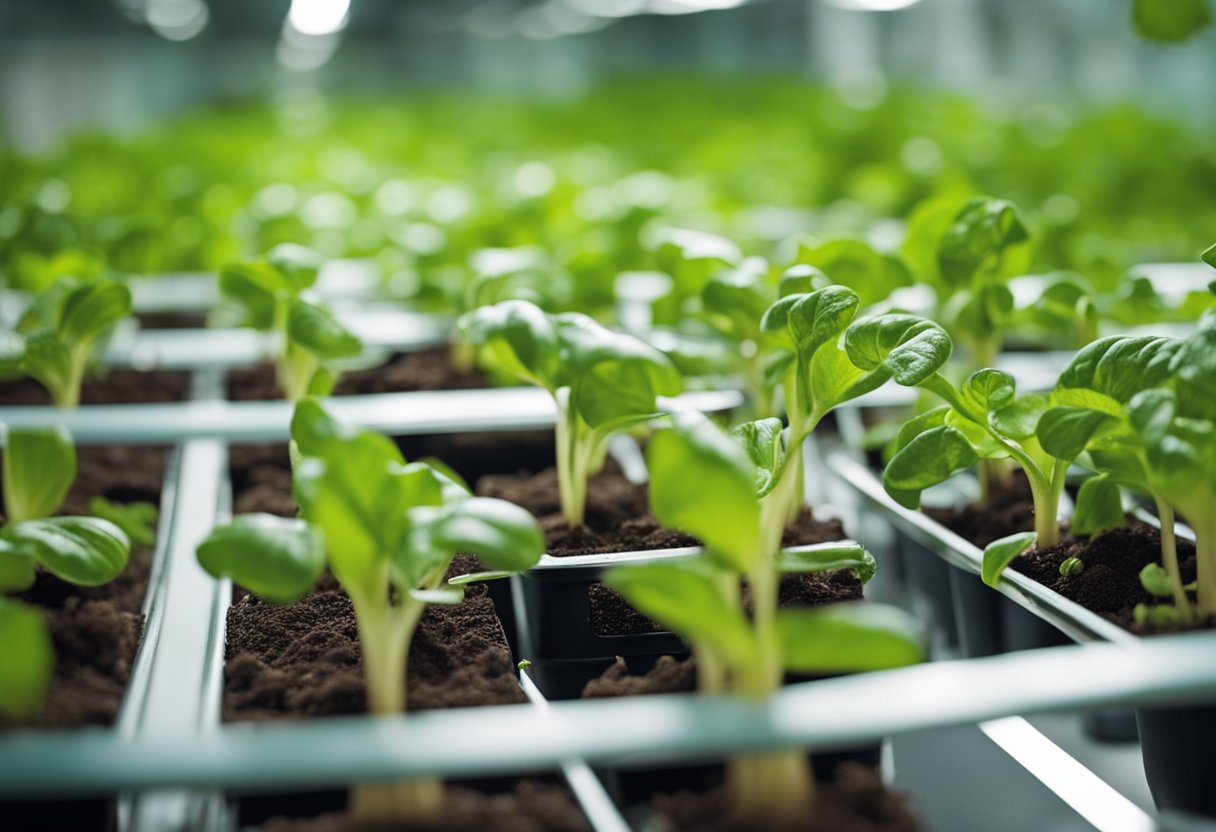
In our hydroponic wick systems, the nutrient solution is the lifeline of the plants. We must manage it right to ensure plants get all they need.
Maintaining Nutrient Levels and pH
To keep our plants thriving, it's vital to monitor nutrient levels and pH closely. We aim to maintain a nutrient balance that's just right—nutrient-rich water that's neither too diluted nor too concentrated. Our plants absorb these nutrients, so regular checks are a must. Here's what we need to keep an eye on:
- pH levels: The ideal range is usually between 5.5 and 6.5. It affects nutrient uptake, and staying within this range ensures maximum absorption.
- Nutrient balance: The concentration of nutrients should match the growth stage of our plants.
- Temperature: Keep it between 18°C and 24°C to prevent plant stress.
- Aeration: Oxygenated water helps roots breathe; we can't let them suffocate!
Monitoring tools like pH meters and EC (electrical conductivity) meters are our allies here. Regularly testing the water ensures we're not flying blind and can make adjustments when needed.
When and How to Change Nutrient Solution
We need to change the nutrient solution because, over time, it gets used up and can harbour unwanted guests like algae. If we notice the solution looks a tad funky, or our green friends look like they're having a rough day, it's time for action. Here are a few signs:
- Changed colour, smell, or texture of the solution, which can indicate contamination.
- Reduction in solution level, meaning our plants are more thirsty than we thought.
- Deviations in pH or EC readings, signalling it's time for a fresh batch of nutrients.
- Unhappy-looking plants might mean they are missing out on vital nutrients.
When these signs appear, we should:
- Empty the old solution: Dump it away from our garden.
- Cleanse everything: Give the reservoir, wick, and growing medium a good rinse to remove residues.
- Mix new nutrient solution: Tailor it to our plants' current needs and adjust pH accordingly.
- Refill with the fresh solution: Ensure that our wick is in top-notch condition to continue delivering nutrients effectively.
Changing the nutrient solution at least every fortnight is a good rule of thumb. It's like giving our plants a new lease on life every couple of weeks—and they do appreciate it!
Tailoring to Diverse Plants
When we talk about setting up wick hydroponics, we need to consider the variety of plants that thrive in such environments. Let's focus on what really works for this passive and simple system.
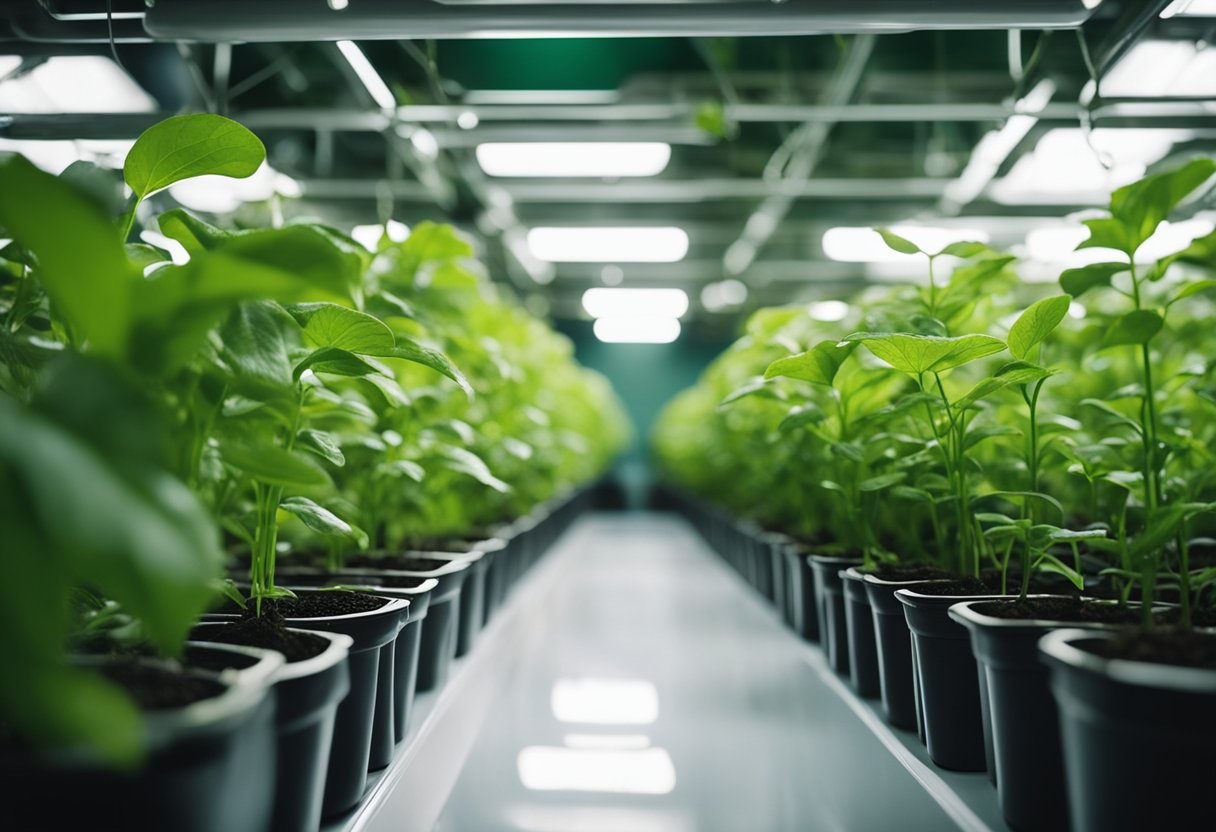
Optimal Crops for Wick Systems
Have you ever wondered if your beloved leafy greens or tangy tomatoes could flourish in a wick system? Let’s find out. Our wick systems are fab for smaller plants that are known to have moderate to low water needs. Lettuce and herbs? They love it! These little champs are perfect because they don't guzzle up water like it's going out of fashion.
- Suitable Veg:
- Lettuce
- Spinach
- Herbs (e.g., basil, mint)
- Microgreens
And what about tomatoes, you ask? While we can coax them to grow happily in a small-size wick setup, they become quite the divas as they mature, requiring more water and care than our simple wick system might offer. It's best to stick to smaller varieties.
For seedlings, it's spot on! A wick setup is gentle, providing moisture without disturbing their delicate new roots. Yet, for root vegetables that need more room to spread out and lots of water, it's a no-go. They're better off in more advanced hydroponic systems designed to cater to their hefty appetites.
- Plants to Think Twice About:
- Larger tomato varieties
- Root veggies (e.g., carrots, beets)
Remember, our wick systems need a good balance. One wick per plant is the golden rule for smaller plants, while water-hungry ones might need a bit more persuasion with two, to keep them from throwing a strop. Keep this in mind, and you'll see your plants thrive and give you the lush, green sanctuary you're yearning for.
Ongoing System Maintenance and Troubleshooting
Keeping our wick hydroponics system in tip-top shape is crucial for the success of our endeavours. It's like keeping a bike well-oiled; regular checks and timely tweaks can make all the difference. Now, let's dive into how we can fend off those pesky problems!
Preventing Common Issues
No one likes to see their plants in distress, do we? To prevent common issues such as rot, mould, and algae growth, we need a vigilant eye and a gentle hand for maintenance. Here's what we've got to keep an eye out for:
- Rot and Mould: Keep the humidity in check! These fungi love a damp environment, so let's make sure our space is well-ventilated. Periodically, we should inspect our wicks and root system for any signs of decay, giving them a quick once-over with a safe fungicidal solution if needed.
- Algae: A bit of sunlight is good for the soul, but not so much for our nutrient reservoir – it's a pool party for algae. Covering our reservoirs with an opaque material will keep these uninvited guests at bay. Regularly cleaning out the system is also a must to prevent build-up.
- Aeration System: Roots crave oxygen just like we do! While wick systems generally don't involve complex aeration, ensuring that the growing medium isn't too dense to allow air circulation can help prevent the dreaded root rot, so let's stick to lighter, airier materials.
- Drawing up Nutrients: Check that the wicks are efficiently pulling up the nutrient solution. This can be affected by the number of wicks you use. If they're not, it might be time to replace them or perhaps tweak the density of the solution. Remember, the wicks are like the straws for our plants – they need to be clear for a good sip.
- Regular Checks: Make a schedule and stick to it. Visual checks and adjusting the nutrient levels should be part of our weekly gardening ritual.
Conclusion
In exploring wick system hydroponics, we've uncovered its essence as a remarkably straightforward approach to soilless gardening. It's a passive system; one that cleverly utilises the natural phenomenon of capillary action to deliver nutrients to the plants' roots. This simplicity not only makes it accessible for those of us starting out but also offers a peaceful gardening experience without the hum of pumps.
Advantages:
- Low Maintenance: There are no moving parts, and no electricity needed, hence less that can go wrong.
- Cost-Effective: With minimal components required, initial set-up and running costs are kept low.
- Space-Efficient: The wick system can be easily integrated into small spaces, making it ideal for urban dwellers.
Limitations:
- Growth Rate and Size: Some plants may grow slower compared to other active hydroponic systems.
- Plant Type Limitations: It's most effective with smaller, less thirsty plants, as larger plants may require more water than the wicks can supply.
Summary: We've learned that the wick system is an excellent starter kit for the world of hydroponics. If we're looking to dip our toes into these waters, the wick method ensures we aren't immediately swamped. From minimal equipment and setup fuss to the delights of low maintenance, it's a method that respects both our time and wallets.
We must acknowledge, however, that while the wick system has its charms and is a fantastic entry point, larger-scale aspirations might necessitate more complex systems. But if a cosy, intimate garden is what we're after, the wick system is our steadfast ally.







 Store Locator
Store Locator

